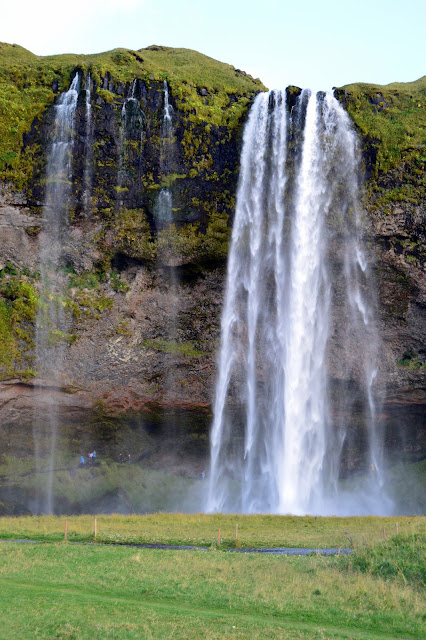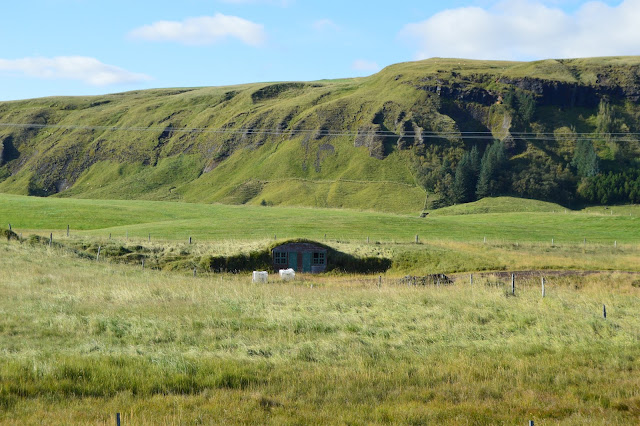November 2015.
This post is for beginners in photography and readers who want to buy a tripod for use during their travels but don't have much idea how to start looking for one. The post does not cover the intricate details about high-end expensive tripods but gives an overview of how to go about buying your first affordable tripod.
I am no expert in photography yet, neither am I an expert in tripods. I am someone who is learning photography. And as one learns to capture more challenging pictures, often in inadequate lighting conditions like starlit night sky or the Northern Lights, one feels the need of a tripod. I recently purchased a tripod and although there are a lot of articles on the internet about how to decide which tripod to buy balancing price and usability, I figured that I could put down the research I did which may be of some use to someone who is setting out on the path to learn photography and is thinking of investing in a tripod.
I have been traveling for nearly 8 months now and photography has become an integral part of my travels. And as I slowly graduated from point & shoots to more sophisticated cameras (I recently purchased a Nikon D5500 with a 18-140mm lens), I realized that there are situations where a tripod can make a lot of difference in how a picture turns out to be. Although many cameras (DSLR's or otherwise) and lenses these days have image stabilisation / vibration control functionality, still sometimes there is no substitute of having a good tripod handy.
When is a tripod handy!
Situations where a tripod might improve the quality of your pictures:
Things to consider before buying a tripod!
This post is for beginners in photography and readers who want to buy a tripod for use during their travels but don't have much idea how to start looking for one. The post does not cover the intricate details about high-end expensive tripods but gives an overview of how to go about buying your first affordable tripod.
I am no expert in photography yet, neither am I an expert in tripods. I am someone who is learning photography. And as one learns to capture more challenging pictures, often in inadequate lighting conditions like starlit night sky or the Northern Lights, one feels the need of a tripod. I recently purchased a tripod and although there are a lot of articles on the internet about how to decide which tripod to buy balancing price and usability, I figured that I could put down the research I did which may be of some use to someone who is setting out on the path to learn photography and is thinking of investing in a tripod.
I have been traveling for nearly 8 months now and photography has become an integral part of my travels. And as I slowly graduated from point & shoots to more sophisticated cameras (I recently purchased a Nikon D5500 with a 18-140mm lens), I realized that there are situations where a tripod can make a lot of difference in how a picture turns out to be. Although many cameras (DSLR's or otherwise) and lenses these days have image stabilisation / vibration control functionality, still sometimes there is no substitute of having a good tripod handy.
When is a tripod handy!
Situations where a tripod might improve the quality of your pictures:
- Low lighting (needs slower shutter speeds which makes the camera vulnerable to shakes)
- Trying to capture the night sky (needs very slow shutter speeds and clicking with a hand held camera results in blurred pictures)
- Extremely cold conditions where your hands start to shake and a picture which otherwise would have turned out to be fine is affected by the shake of your hands
- Waiting for a specific moment to click a picture (say sunrise or sunset: holding the camera in your hand at awkward angles will tire you leading to shakes and lower quality pictures)
- Clicking a subject at awkward angles is easier if you have an appropriate tripod
- Taking a series of photos at different angles to produce a panorama
- It is easier to take your own pictures while traveling alone as a tripod gives you the freedom to click from various heights and at different angles
Things to consider before buying a tripod!
Even though a tripod performs a pretty basic function, choosing the best tripod often involves many competing factors. I am putting these down in order of their importance (useful for a person who likes to travel and is buying his/her first tripod but not sure how much to invest in it)
- Weight of the tripod: You are used to carrying just your camera till now. But the tripod itself will have weight and will need effort to lug around. Most of the times you will want to carry your tripod in cabin baggage while flying and thus the weight becomes more of an issue (7 Kg hand baggage limit). But keep in mind that tripod weight and sturdiness are related. Don't sacrifice too much of one for the other as the end objective of a tripod is to keep the camera steady.
- Load capacity of the tripod: Depending upon the type of camera and lens you use or plan to use in the near future, different load capacity tripods might be relevant for you. All brands give the load capacity of their tripod. Entry level tripods support ~2Kgs and as you go higher, they support around 5Kgs. Unless you are a professional and using very heavy cameras and lenses, these should suffice.
- Maximum and minimum Height of the tripod: Maximum height is especially important if you're quite tall, since you could end up having to crouch. (Keep in mind that using the center column to increase the maximum height makes the tripod less stable). Minimum height is important if you take macro (shooting a subject from very close) shots often.
- Contracted tripod height: This is important if you want to fit the tripod in a small bag or suitcase like your cabin luggage while flying. Cabin baggage dimensions allowed in aircrafts are 55x40x20cms.
- Price of the tripod: I have put price lower down in terms of priority as there are many brands available in the market and you will probably be able to get what you want at different price points. So I believe price should come after one has considered above factors.
- Tripod Head: The two most common types of tripod heads are pan-tilt and ball head:
- Pan-tilt head: It has two to three separate handles which allow you to move the camera along different axes (horizontal, vertical) to be able to click pictures in a specific direction or at a certain angle. For ease of storage, do check that the handles are easily removable so as to make the tripod easy to pack and carry along .
- Ball head: Allows you to position your camera in any direction in a single action instead of using 2 or 3 handles as in case of pan-tilt head. The downside is that ball head is less accurate in terms of positioning the camera. In a pan-tilt head, one can change the positioning on one axis (horizontal / vertical) while keeping the other exactly the same (due to presence of two different handles). So, a ball head is easier to use but comparatively less precise when it comes to camera positioning.
There are tripods of different brands on Amazon India website (or any other e-commerce website of your liking). Couple of brands that I thought might be appropriate for beginners who want a tripod that lasts them at least a couple of years are Manfrotto and Vanguard (this list is not exhaustive and may change depending on the features you are looking for and the cost associated). Manfrotto is more expensive of the two. I personally found Vanguard to be a better bet when it comes to balancing quality and cost vis-a-vis its more pricey competitors. There are other cheaper tripods available online as well but I feel that they lack in something or the other from the above list and eventually the safety of your camera and lenses depends on the tripod you use.
I hope that I was able to provide some pointers which will help you in buying a tripod that suits your needs without going overboard in terms of cost. There are many other useful articles on the web that you could read to get more information on any specific aspect.
Please feel free to comment and/or share if you find the post useful.
Happy hunting :) !!


























































